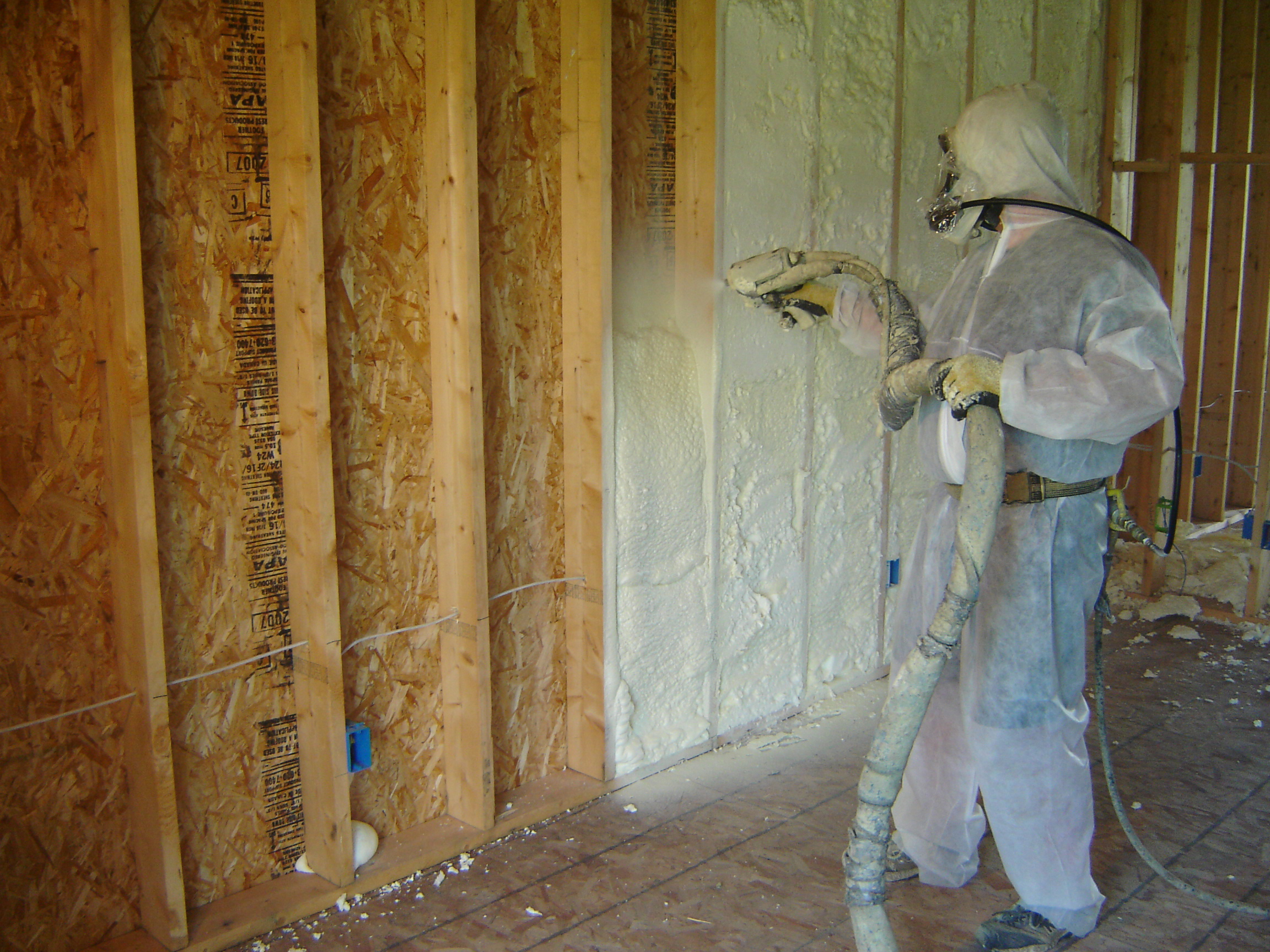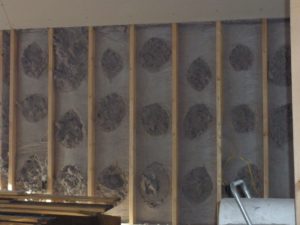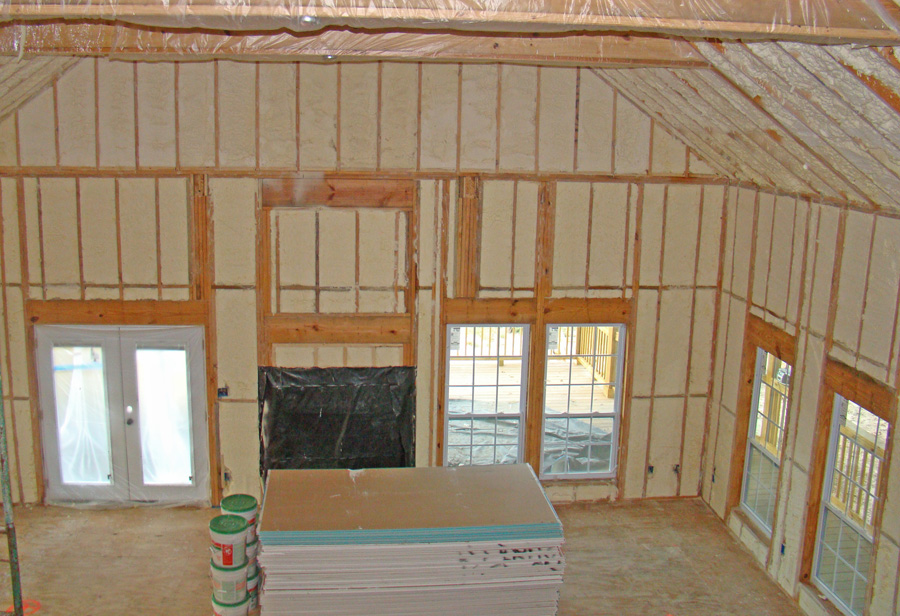
Foam Insulation Vs Other Types
What insulation do you need for YOUR home?
Don’t blame your HVAC system if rooms in your home get too hot or too cold at certain times of the year, or if your electric and fuel bills are high. More often than not, these problems are caused by inadequate insulation.
But what parts of your house need an insulation upgrade? What types of insulation will give you the best performance and value?
To decide what type of insulation is better for your home you need to understand how insulation is rated. Each type of insulation has a different effectiveness when it comes to how it holds in or keeps out heat. The effectiveness of a type of insulation is measured in R-Values. Below is a brief explanation of what R-Values mean.

What is insulation R-Value?

An insulating material’s resistance to conductive heat flow is measured or rated in terms of its thermal resistance or R-value -- the higher the R-value, the greater the insulating effectiveness. The R-value depends on the type of insulation, its thickness, and its density. Installing more insulation in your home increases the R-value and the resistance to heat flow.
Basically the higher the insulation's R value the better your home holds in heat or A/C. This also means because more of your heat and A/C is staying inside the home instead of leaking out, your systems do not have to work as hard and use as much Electricity or fuel.
Lets see how the different types of insulation compare to Spray Foam.
Fiberglass
Fiberglass insulation is among one of the most common forms for home insulation, it is very cheap compared to spray foam insulation and can at times even be installed by homeowners if desired. Spray foam insulation is not as frequently used, a little more spendy and requires professional installation. Just looking at those small factors, we would automatically feel inclined to go for fiberglass but lets take a closer look at the JOB each one of this accomplish.

- Lower R- Value ( approx. 2.9-3.8 per inch)
- Not very pocket friendly, higher energy bills
- Causes air pollution due to fiberglass fabrication
- Causes air to leak
- Can’t cover small areas, exposing home to air leak
- Lifetime: 10-25 if kept dry
- Mildew and mold forms with time
Blown in Cellulose
- The insulating material (usually fiberglass and cellulose) is blown in smaller chunks with the help of a machine and a large hose going into the attic.
- Both the chief insulating substances – fiberglass and cellulose – have about the same R-values of around 3-4 per inch.
- Blown in insulation doesn’t leave as much gap as batt insulation does.

- Both fiberglass and cellulose do not have a good R-value like spray foam. Their R-values are around 2.2 to 3 per inch.
- Cellulose is a very environmentally friendly material because it is made from recycled paper and it is more cost-effective than other substances like cotton and safer to install than fiberglass.
- The installation is majorly not a DIY project and requires professional expertise.
- Prolonged exposure to moisture can lead to decaying of the insulation material and growth of mold. The insulation isn’t for a lifetime and generally lasts for about 10-25 years.
Foam Board
- R-value varies based on type of rigid foam. It can be as low as R-3.8 per in. or as high as R-7 per in.
- More time-consuming installation than spray foam in some (but not all) applications.
- Sometimes single-component spray foam must be applied around edges of rigid foam to seal and hold panel in place.

- Rigid foam can only be installed in an open, exposed wall. If you are installing insulation for the first time, this may not be a problem. However, if you have insulation and drywall installed already, having to destroy all of it, install insulation, and install a new wall may be more trouble than it is worth.
- Because rigid foam does not expand, mistakes in insulation can cause much more serious problems. Rigid foam is more likely to lead to air and moisture leaks, and the chances of this happening go up significantly if the rigid foam is not installed perfectly.
- While the materials involved may be comparable, a single gap or crack that is left unfilled by rigid foam can lead to much greater energy consumption when heating and cooling your home.



Spray Foam
- Allergen-free
- The foam (usually polyurethane) is sprayed to fill cracks and gaps in the attic to form a hermetically sealed barrier.
- Spray foam provides the highest R-value – while open cell spray foam has about an R-value of 2.2 to 3.5 per inch, closed cell spray foam has about 6-7 per inch.
- Spray foam expands to become 10 times its previous size thereby filling up most unfillable nooks and crannies of your house.
- Environmentally Friendly
- Open cell spray foam has a much higher R-value of around 3.5 per inch while closed cell has 6-7 per inch.
- Open cell spray foam is ineffective against penetration by water vapor but closed cell provides a good barrier against the entrance of moisture and prevents growth of mold and mildew. But when installed incorrectly spray foam is known to cause minor health hazards especially breathing troubles and may even give off a fishy smell.
- The installation procedure requires experienced contractors.
- Closed cell spray foam can last for up to 80 years given that the installation is done properly. Spray foam insulation also allows you to move the envelope of your building from the floor to the roof and lets you include ducts and air vents within the envelope without requiring you to change the scheme and system of your house.
- You can save 30% or more on energy bills
Other Benefits
These are only SOME of the many benefits you get. Many of you have children at home and proper insulation can play a major role in the health of them. It has been proven by many that other typical insulation methods, such as fiberglass, cause things as mold and mildew etc to form. Spray foam PREVENTS these from forming which significantly improves air quality within your home. This reduces allergy and asthma attacks, which we know or have seen is no fun. Also as you noticed about, the lifetime of fiberglass is nearly ¼ of the lifetime spray foam has, and that is if kept dry. Meaning that fiberglass may not be such a great option especially in rainy seasons. Spray foam on the other hand it perfect because it does not become damaged with water.
Investing into spray foam insulation may seem costly, but it will fare better with time. Your money will be worth the investment and your home will be a much better place to be in. Make a wise choice not only for your home but for your family. It will be something you won’t regret
